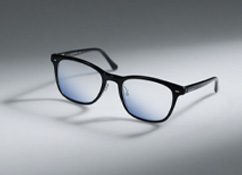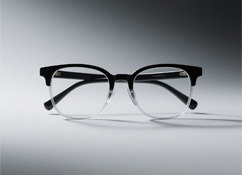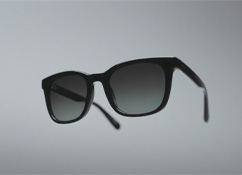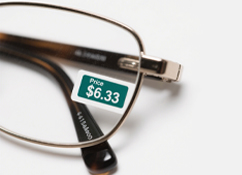Does Blue Light Glasses Prevent Myopia or Relieve Eye Fatigue? The Truth Explained
1. What Is "Blue Light"?
Visible light—what the human eye can see—is often called "white light," composed of red, orange, yellow, green, blue, indigo, and violet. Each color’s hue depends on its energy and wavelength.
Why is "blue light" singled out for protection? Because it’s the highest-energy part of visible light. Specifically, it refers to high-energy visible (HEV) light in the 380–500nm range within the blue and violet wavelengths [1]. More precisely:
· Short-wavelength blue light (400–450nm) may damage the retina.
· Long-wavelength blue light (450–500nm) helps regulate circadian rhythms and is linked to sleep, mood, and memory—beneficial for health [2].
Sunlight is the strongest source of blue light, accounting for most of our daily blue light exposure. Electronic screens and household lights also emit blue light, but at levels far lower than sunlight [3].
2. How Harmful Is Blue Light to the Eyes?
While animal studies show blue light can harm their eyes, there’s no solid evidence that blue light from electronic devices directly damages human eyes. In daily life, the risk of blue light harming the eyes is extremely low for most people [4]. Science is still deepening its understanding of blue light’s effects on eyes.
Except for special cases (e.g., welders exposed to intense arc light), blue light in everyday life rarely causes direct eye damage.
3. Blue Light Glasses Aren’t as Magical as Claimed
Blue light glasses work by either reflecting short-wavelength blue light via a coated lens surface or absorbing it through blue-light-blocking materials in the lens.
However, studies show filtering blue light doesn’t actually reduce eye fatigue from staring at electronic devices [2]. There’s also no clear clinical evidence that these glasses prevent myopia.
4. 10 Practical Eye-Care Tips
To reduce potential blue light effects, protect eye health, and ease fatigue, try these 10 strategies:
1. Limit continuous screen time, especially at night—blue light may disrupt sleep cycles.
2. Follow the "20-20-20 rule" recommended by the American Academy of Ophthalmology: Every 20 minutes, look at an object at least 20 feet (about 6 meters) away for 20 seconds to reduce fatigue.
3. Adjust screen brightness and contrast: Match them to ambient light to avoid overly bright or dim screens.
4. Keep a safe distance: Stay at least an arm’s length from the screen to reduce focusing strain.
5. Tilt the screen slightly downward: This reduces the angle between your eyes and the screen, easing fatigue.
6. Ensure proper lighting: Use screens in soft light—avoid complete darkness or harsh glare.
7. Get regular eye exams: Especially for children and teens, to monitor vision changes.
8. Spend more time outdoors: Natural light supports eye health and lowers myopia risk, research shows.
9. Use eye-care or night modes: Many devices offer these to reduce blue light output [5].
10. Avoid screens before bed: Blue light exposure before sleep may harm sleep quality—stop using devices 1 hour before bed.
5. Who Should (and Shouldn’t) Wear Blue Light Glasses?
Blue light glasses can benefit these groups:
· People with retinal diseases or who’ve had cataract surgery (e.g., those with macular degeneration), as their eyes filter blue light less effectively and need extra protection.
· Adults who stay up late staring at screens: A quality pair may reduce glare and fatigue, though improving screen habits matters more.
Note: Children under 6 should not wear blue light glasses. This is a critical period for normal eye development, and intentionally blocking blue light may disrupt healthy eye growth. The American Academy of Ophthalmology and other health organizations recommend improving habits and environment over relying on these glasses.
In short, if you’re worried about kids overusing devices during holidays, instead of buying blue light glasses, limit their screen time and encourage more outdoor activities!











